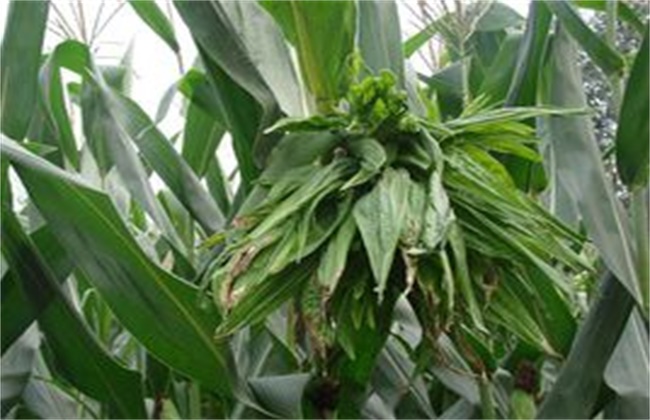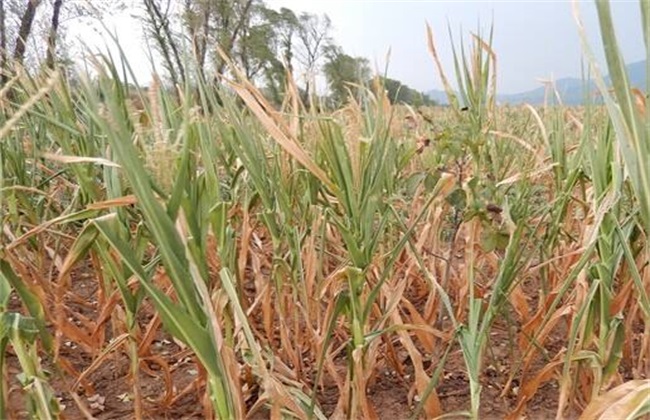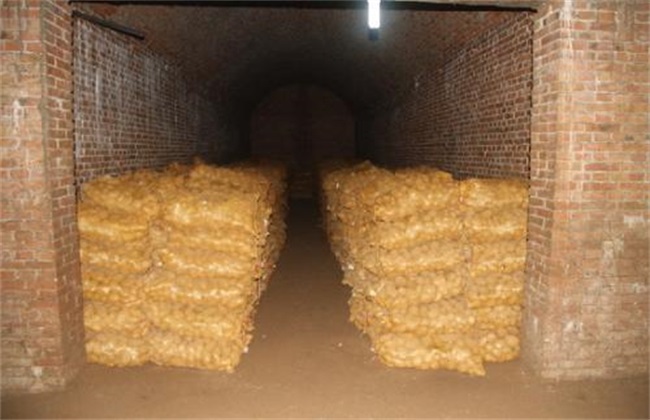Preventive measures of Maize Crazy Top Disease
Maize mad top disease is not only a potential danger affecting corn production, but also a disease prone to occur during the whole corn planting period, which has a great impact on corn yield and often gives farmers a headache. The following editor brings you preventive measures, let's learn about it.

1. Symptom manifestation
The symptoms of Mandingbin varied with different varieties and stages of the disease. in the early stage, the leaves were lighter, the leaves were curly or with yellow stripes, the plants became shorter and had larger tillers, and some plants were less than 1 meter high, but there were as many as 6-10 tillers. After heading, the symptoms of the disease are often characterized by male ear proliferation and deformity, floret, a large number of leaflet clusters, so that the male ear into a hedgehog. On some diseased plants, the upper part of the male ear is normal, the lower part is deformed, showing a round hydrangea shape, due to the male ear proliferation and crazy growth, it is called "crazy top disease". Sometimes the diseased female spike does not draw filaments, the leaf tip is abnormal, and the leaflet-like cluster is formed, but sometimes the leaflet-like front end of the female panicle is characterized by the variety.
2. The route of transmission
Maize Mengdingbin is a kind of fungal spore subsystem infection virus, the pathogen is parasitic in the diseased plant or soil, and after sowing, the pathogen begins to divide the oospore and send it to the new host. Maize is most susceptible to infection during germination, and infected seeds can also spread over a long distance, thus inducing new infected areas. according to studies, normal-looking plants have a high seed carrying rate and a high risk of spreading diseases.
3. Preventive measures
Varieties with strong disease resistance should be selected for breeding and planting to prevent the early spread of the disease. Newly sown corn should be as far away from the epidemic area as possible, do not plant with diseased plots, and do not introduce seeds from the epidemic area. Strengthen the cultivation management, remove the diseased plants and weeds in the diseased field after harvest, destroy them in time, dig deep into the soil, promote the decay and decomposition of the diseased and residual bodies, or carry out rotation between corn and non-host crops. In the seedling stage, the amount of irrigation should be strictly controlled to avoid flooding, timely elimination of stagnant water in the field, and reduce soil moisture. When a disease occurs, the diseased plants should be removed in time and destroyed with conditions to avoid the spread of the disease. Regular disinfection and sterilization can be carried out with 59% metalaxyl manganese zinc or 260 ml antiseptic alum spray.
The above is the introduction of corn mad top disease prevention measures, hope to help you, want to know more related knowledge, please pay attention to us.
Related
- The first cup of black tea in spring, the flavor and history of tea gardens in Kenya, Africa
- The computer can not only choose potatoes, but also grow tea rice. AI will grow winter oolong tea champion.
- It is not only the inflated tea bitten by insects, but also engraved with the four seasons tea in Beipu.
- The Oriental Beauty Tea Festival in Zhuxian County takes the stage at the weekend to experience the plus-size feast of oil tea.
- & quot; Oriental Beauty Tea & Exploration of Emei in Hsinchu, the hometown of quot;
- The new variety of strawberry "Tainong 1" dessert is the first choice with mellow aroma. Crimson gorgeous
- History of Tea in Taiwan: from Wild Inner Mountain to Export Tea Garden
- Two types of Taiwan Oriental Beauty Black Tea won the British three-Star Award for Childhood Tea Xiang Zhang Jiaqi changed from pilot to champion tea maker.
- Banana species and varieties: the planting history of Taiwan Xianren banana and dwarf banana is long, is banana disease resistant?
- Coffee planting Technology: Qianjie Coffee from Seedling to harvesting



